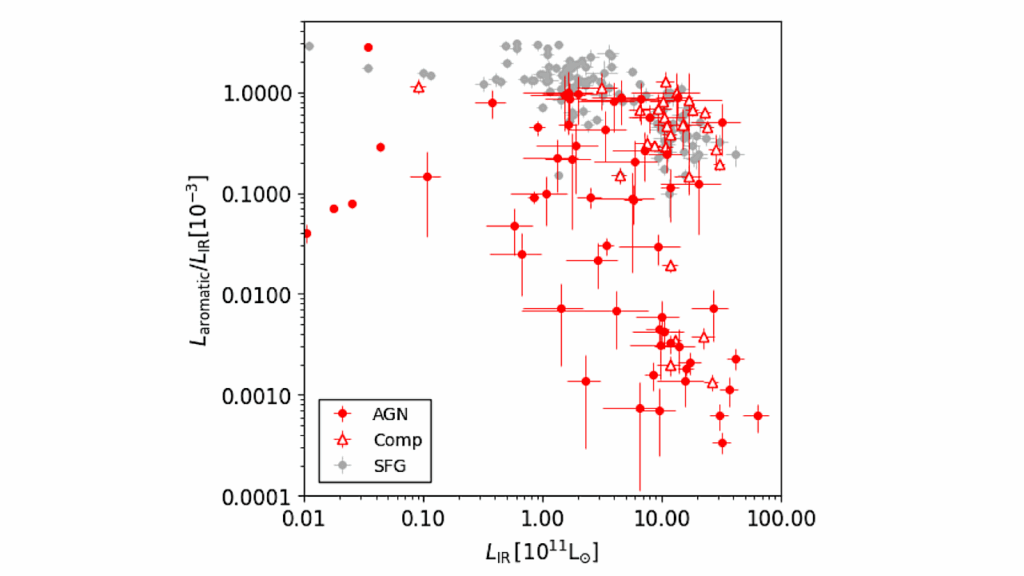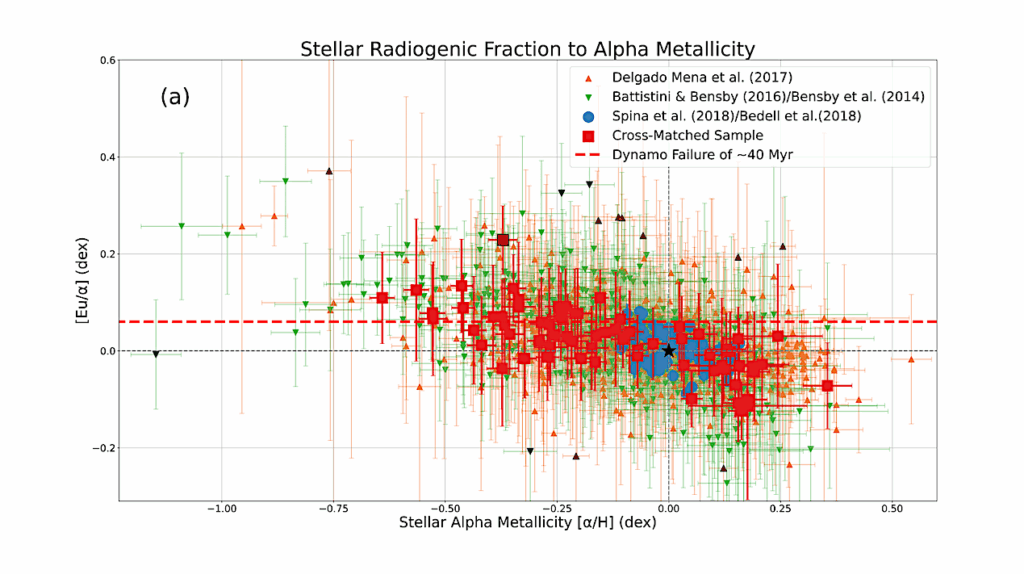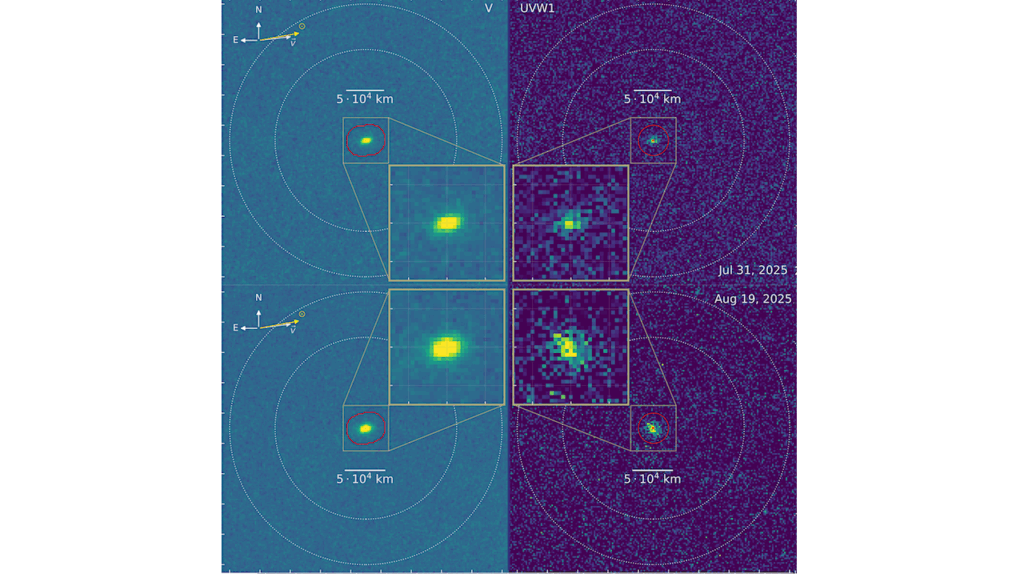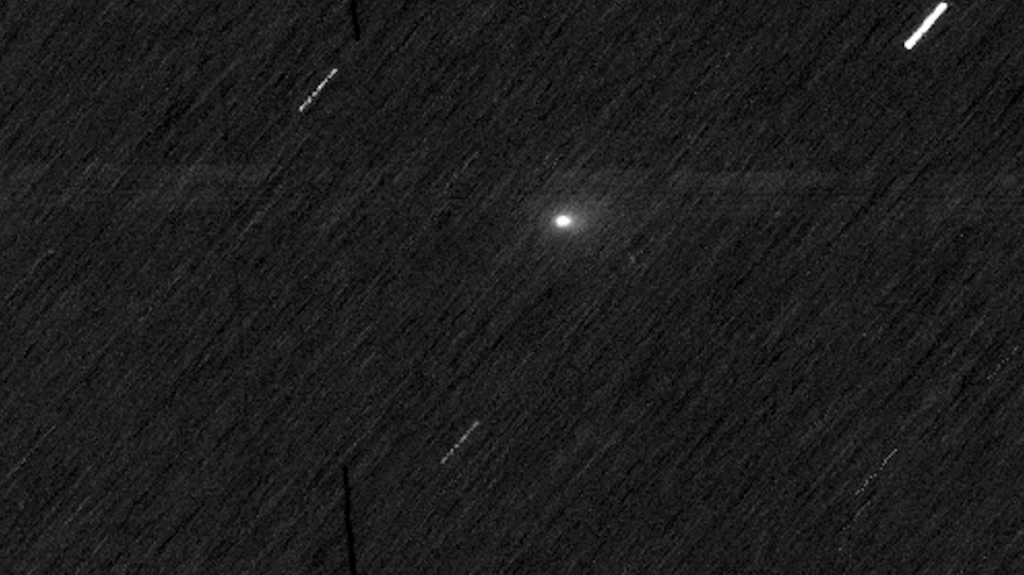FLAMINGOS-2 Infrared Photometry of 2I/Borisov
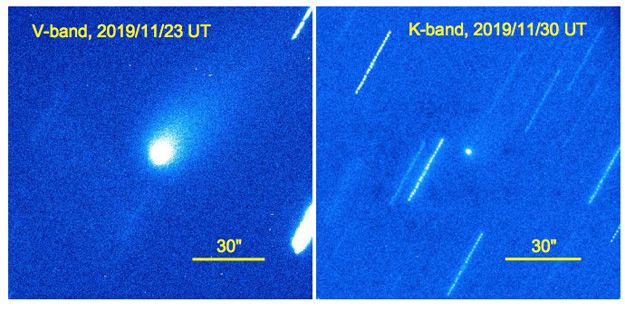
2I/Borisov is the second interstellar object (ISO) after ‘Oumuamua (Meech et al. 2017), but differs from ‘Oumuamua drastically with its extensive cometary activity. A key ingredient to understand the nature of this comet is its size.
However, due to its cometary activity and extended coma in the optical, only rough estimates and upper limits can be made for 2I/Borisov, ranging in a wide spread from 0.7 to 3.8 km (Guzik et al. 2019; Fitzsimmons et al. 2019; Jewitt, & Luu 2019; Bolin et al. 2019). It has been shown that observations at longer wavelengths (i.e. infrared) are less susceptible to the effects of coma, and can provide a better estimate of the size of the comet nucleus (see, e.g., Fernández et al. 2013; Bauer et al. 2017).
Here we present an estimate of the nucleus of 2I/Borisov from infrared observations by FLAMINGOS-2 on-board the Gemini South telescope (under Fast Turnaround program GS-2019B-FT-207), and infer a comet nucleus size of 1.5 km, comparable to but more stringent than the estimate from Keck AO imaging by Bolin et al. (2019).
Chien-Hsiu Lee (NSF’s OIR Lab), Hsing-Wen Lin (University of Michigan), Ying-Tung Chen (ASIAA), Sheng-Feng Yen (ASIAA)
(Submitted on 11 Dec 2019)
Comments: 3 pages, 1 figure
Subjects: Earth and Planetary Astrophysics (astro-ph.EP)
Journal reference: RNAAS, 2019, 3, 12
DOI: 10.3847/2515-5172/ab5f69
Cite as: arXiv:1912.05628 [astro-ph.EP] (or arXiv:1912.05628v1 [astro-ph.EP] for this version)
Submission history
From: Chien-Hsiu Lee Dr.
[v1] Wed, 11 Dec 2019 21:08:27 UTC (1,355 KB)
https://arxiv.org/abs/1912.05628
Astrobiology, Astrochemistry


